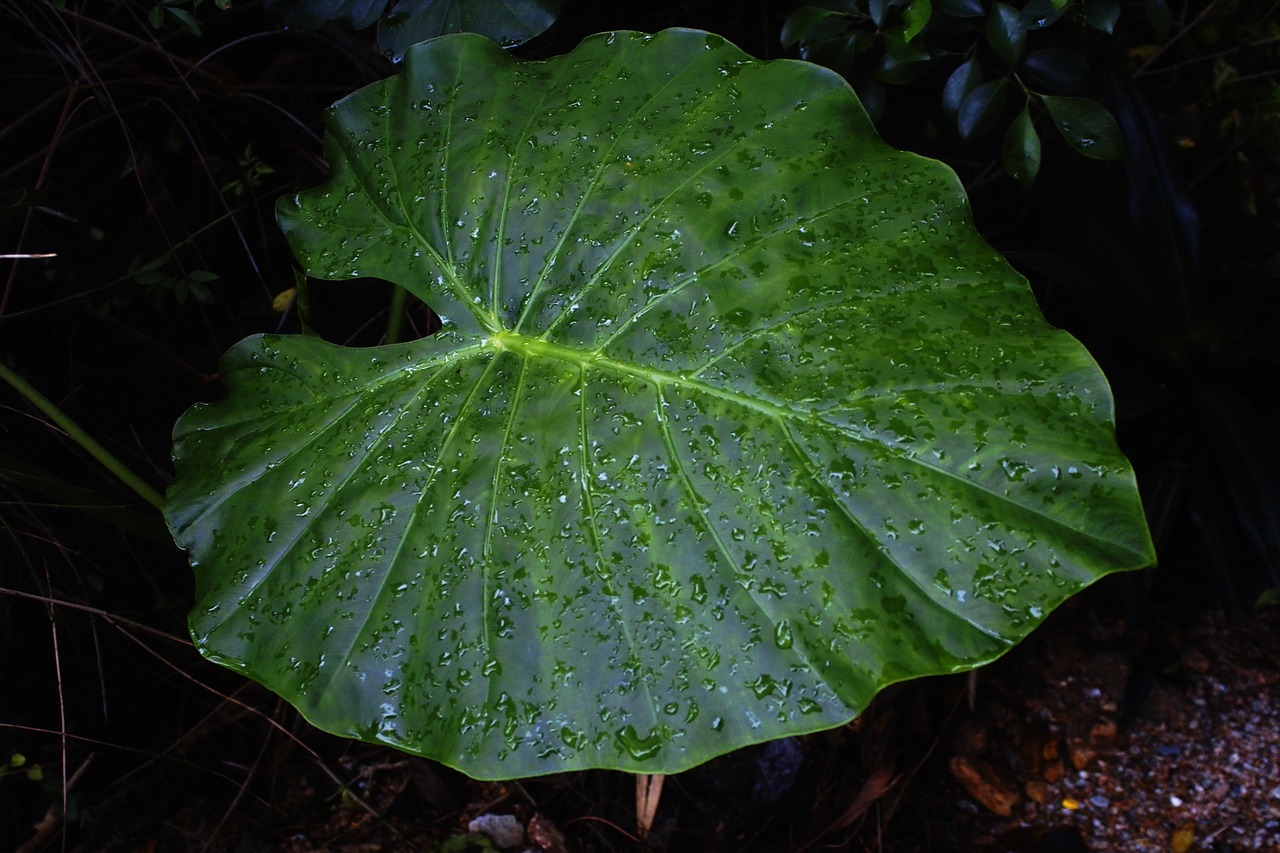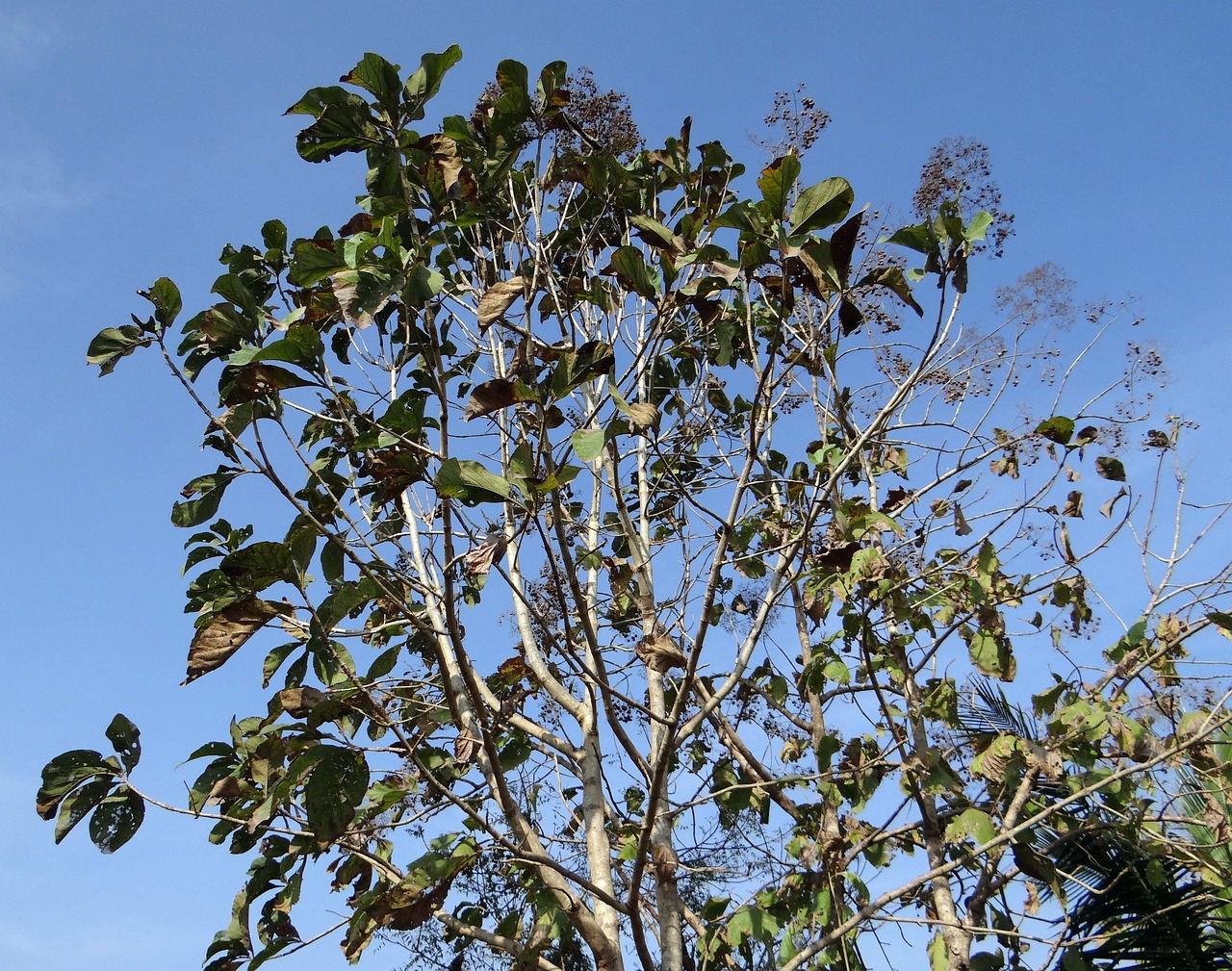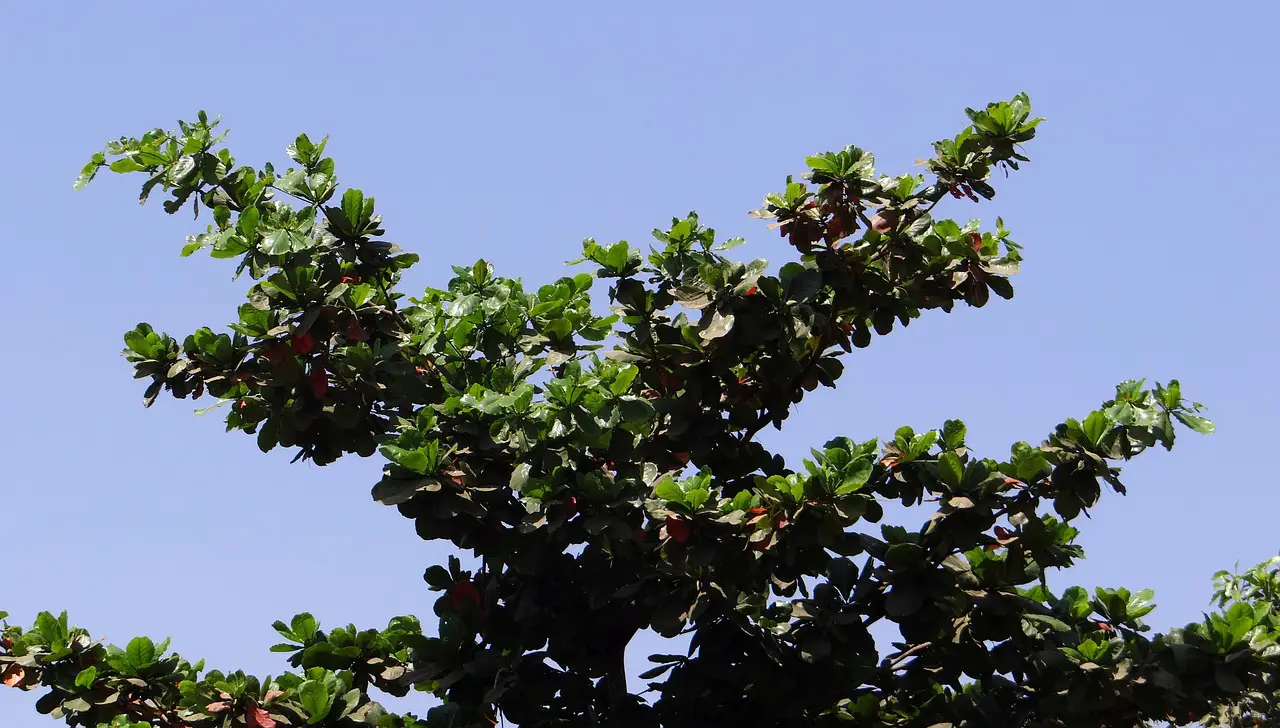The Best Broad-Leaved Trees for Shade and Beauty
When considering the best broad-leaved trees for shade and beauty, a few standout species come to mind. The Red Maple, Oak, and Sweetgum trees are popular choices. They provide ample shade and add aesthetic value to any landscape with their vibrant foliage and unique forms.
Broad-leaved trees are known for their wide, flat leaves, which are typically more efficient at capturing sunlight. This characteristic allows them to grow quickly, making them excellent choices for providing shade in gardens and parks. In addition to their practical uses, these trees also enhance the beauty of outdoor spaces. They come in various shapes, sizes, and colors, contributing to the visual appeal of any environment.

Many broad-leaved trees exhibit stunning seasonal changes. Their leaves might transform into brilliant hues of red, orange, or yellow during autumn, while spring brings fresh green growth. This seasonal variation offers ongoing interest throughout the year. Additionally, broad-leaved trees often produce flowers or fruits that can attract various wildlife, including birds and beneficial insects.
Key Characteristics of Broad-Leaved Trees
Broad-leaved trees possess several characteristics that make them desirable for landscaping. Understanding these traits can help you choose the right species for your needs.
- Leaf Structure: Broad leaves are designed to capture sunlight effectively.
- Growth Rate: Many species grow quickly, providing shade in a shorter time frame.
- Seasonal Changes: Leaves change color with the seasons, adding visual interest.
- Wildlife Support: They often provide habitats and food sources for wildlife.
- Variety: There are numerous species available, each with unique features.
Top Broad-Leaved Trees for Shade and Beauty

Here is a selection of some of the best broad-leaved trees known for their outstanding shade and beauty:
| Tree Species | Height (ft) | Leaf Color | Foliage Change |
|---|---|---|---|
| Red Maple | 40-60 | Green to Red | Brilliant Red in Fall |
| Northern Oak | 60-80 | Dark Green | Golden Brown in Fall |
| Sweetgum | 60-100 | Star-shaped Green | Rich Colors in Fall |
Selecting the right tree depends on various factors such as climate, soil type, and available space. Each of these species offers something unique, whether it’s their towering height or the vibrancy of their autumn colors. By planting broad-leaved trees, you can create a natural sanctuary that provides shade and enhances the beauty of your surroundings.
In conclusion, understanding the best broad-leaved trees can significantly impact your landscaping choices. These trees not only provide essential shade but also contribute to the overall aesthetics of your yard or park. As you continue exploring the various options available, consider how these trees can fit into your landscaping vision.
Factors to Consider When Choosing Broad-Leaved Trees

When selecting broad-leaved trees for your landscape, several factors should be taken into account. Understanding these considerations will help you make informed decisions that align with your specific needs and environment.
Climate Compatibility
Different tree species thrive in various climatic conditions. It is crucial to choose trees that are well-suited to your local climate. Here are some factors to consider:
- Temperature: Some trees prefer warmer temperatures, while others can tolerate cooler climates.
- Rainfall: Consider the amount of rainfall your area receives. Some trees require more moisture than others.
- Wind Exposure: Trees that can withstand strong winds may be necessary in exposed areas.
Soil Type and Quality
The type and quality of soil in your planting area significantly influence the success of your trees. Factors to evaluate include:
- Soil pH: Most trees prefer slightly acidic to neutral pH levels. Testing your soil can provide valuable information.
- Drainage: Well-drained soil is essential, as many broad-leaved trees do not tolerate waterlogged conditions.
- Nutrient Content: Enriching poor soil with compost or fertilizer can promote healthy growth.
Available Space
Proper spacing is vital for the health of broad-leaved trees. Consider the following:
- Mature Size: Research the mature height and spread of the tree species you are considering. Ensure there is enough space for them to grow without overcrowding.
- Root System: Some trees have aggressive root systems that can damage nearby structures or plants.
- Sunlight Exposure: Ensure that the location provides adequate sunlight for the tree to thrive.
Maintenance Requirements
Caring for broad-leaved trees involves regular maintenance to keep them healthy and aesthetically pleasing. Here are some key maintenance tasks:
- Watering: Newly planted trees require consistent watering until established. Mature trees may need watering during dry spells.
- Pruning: Regular pruning helps maintain shape and removes dead or diseased branches. Timing is important; late winter or early spring is often ideal.
- Pest Management: Monitor trees for pests and diseases. Early detection can prevent significant damage.
- Fertilizing: Depending on soil quality, occasional fertilization may be needed to promote healthy growth.
Aesthetic Considerations
The visual appeal of broad-leaved trees can significantly enhance your landscape design. Here are some aspects to consider for aesthetic impact:
- Foliage Color: Choose trees with vibrant leaf colors that complement your existing landscape.
- Tree Form: Different species have unique shapes, from rounded to columnar. Consider how their forms fit into your design.
- Seasonal Changes: Select trees that provide year-round interest through seasonal changes in foliage, flowers, or fruits.
Popular Broad-Leaved Trees for Specific Uses
Certain broad-leaved trees are better suited for specific landscaping purposes. Here are a few notable examples based on their unique characteristics:
Shade Trees
- Silver Maple: Fast-growing and provides dense shade, ideal for large yards.
- American Sycamore: Known for its impressive size and broad canopy, perfect for parks or wide spaces.
Aesthetic Trees
- Kousa Dogwood: Offers stunning flowers in spring and beautiful bark in winter.
- Crape Myrtle: Known for its vibrant summer blooms and attractive fall foliage.
Selecting the right broad-leaved tree requires careful consideration of various factors, including climate, soil, space, maintenance, and aesthetic appeal. By understanding these elements, you will be better equipped to enhance your landscape with beautiful and functional tree choices.

Environmental Benefits of Broad-Leaved Trees
Broad-leaved trees not only enhance the beauty of landscapes but also provide numerous environmental benefits. Understanding these advantages can further motivate the choice to plant these trees in various settings.
Air Quality Improvement
One of the most significant benefits of broad-leaved trees is their ability to improve air quality. Here are some ways they contribute:
- Carbon Dioxide Absorption: Trees absorb carbon dioxide during photosynthesis, helping to mitigate climate change.
- Oxygen Production: Through the same process, trees release oxygen, which is vital for all living organisms.
- Airborne Pollutants Reduction: Broad leaves trap dust, pollen, and other pollutants, cleansing the air around them.
Soil Conservation
Broad-leaved trees play a crucial role in soil conservation. The following points highlight their contributions:
- Root Stabilization: The extensive root systems of these trees help stabilize soil, preventing erosion.
- Nutrient Recycling: Fallen leaves decompose and enrich the soil with organic matter, improving its quality.
- Water Retention: Tree canopies reduce runoff and enhance groundwater recharge by allowing rainwater to seep into the soil.
Tree Selection for Wildlife Habitat
Broad-leaved trees are essential for supporting local wildlife. Selecting the right species can create a thriving habitat for various animals. Consider the following aspects:
Nesting Sites
Many bird species rely on broad-leaved trees for nesting. Trees with dense foliage provide shelter and security for nests. Some notable examples include:
- Oaks: Known for their sturdy branches, oaks are favored by many birds for nesting.
- Willows: Their flexible branches offer a safe environment for smaller bird species.
Food Sources
Broad-leaved trees also produce flowers, fruits, and seeds that serve as food for various wildlife. Some beneficial tree species include:
- Black Cherry: Produces small fruits that attract birds and mammals.
- Sweetgum: The tree’s seed capsules are a food source for squirrels and birds.
Landscaping Ideas Using Broad-Leaved Trees
Incorporating broad-leaved trees into your landscape design can create stunning visuals while serving practical purposes. Here are some ideas to consider:
Shade Gardens
Create a serene shade garden by planting broad-leaved trees to provide cool spaces during hot months. Consider complementing these trees with shade-tolerant plants such as:
- Hostas: Their lush foliage thrives in low-light conditions.
- Ferns: Add texture and greenery to shaded areas.
Mixed Borders
Utilize broad-leaved trees as focal points in mixed borders. Position them alongside flowering shrubs and perennials to create a diverse and colorful display. Recommended combinations include:
- Crape Myrtle with Azaleas: The contrasting blooms create vibrant color throughout the growing season.
- Kousa Dogwood with Daylilies: Stunning flowers and attractive foliage enhance visual interest.
Wildlife Gardens
If wildlife observation is a goal, design a garden that attracts various species. Incorporate broad-leaved trees that provide food and shelter, along with native plants that support local ecosystems. Consider planting:
- Pawpaw Trees: Their fruits are attractive to many animals, including raccoons and deer.
- Red Maple: Its flowers provide early nourishment for pollinators.
Selecting the right broad-leaved trees can significantly enrich your landscape while providing essential environmental benefits and wildlife habitats. By understanding their characteristics and potential uses, you can create a thriving ecosystem in your outdoor space.
Considerations for Planting Broad-Leaved Trees
Before planting broad-leaved trees, it is essential to consider a few additional factors to ensure successful growth and integration into your landscape. These considerations will help you maintain the health of the trees while maximizing their benefits.
Spacing and Placement
Proper spacing is crucial when planting broad-leaved trees. Crowding can lead to competition for sunlight, nutrients, and water. Here are some tips:
- Distance from Structures: Ensure that trees are planted at a sufficient distance from buildings, fences, and other structures to prevent damage as they mature.
- Group Planting: Consider grouping smaller trees together for a more natural look while allowing enough space for each to flourish.
- Consider Canopy Spread: Research the expected canopy size of the species to prevent overcrowding.
Seasonal Planting
The best time to plant broad-leaved trees varies by species and local climate. Generally, early spring or fall is ideal. Factors to consider include:
- Soil Temperature: Ensuring the soil is warm enough promotes root growth.
- Moisture Levels: Fall planting can allow trees to establish roots before winter, while spring planting should coincide with adequate rainfall.
Mulching and Watering
Applying mulch around the base of newly planted trees can provide several benefits:
- Moisture Retention: Mulch helps retain soil moisture, reducing the need for frequent watering.
- Temperature Regulation: It keeps the soil temperature consistent, promoting healthy root growth.
- Weed Control: Mulch inhibits weed growth, minimizing competition for nutrients.
Final Thoughts
Choosing the right broad-leaved trees can dramatically enhance your landscape while providing essential benefits such as shade, beauty, and ecological support. From improving air quality and soil conservation to creating habitats for wildlife, these trees play a vital role in maintaining a healthy environment.
When selecting trees, consider factors like climate compatibility, soil type, available space, and maintenance requirements. By understanding these elements, you can make informed decisions that align with your landscaping goals. Whether you are creating a shade garden, a wildlife haven, or simply enhancing your home’s curb appeal, broad-leaved trees offer a myriad of possibilities.
As you embark on your journey to plant and nurture broad-leaved trees, remember that each tree contributes uniquely to your landscape. The right tree can provide beauty through vibrant foliage and flowers while actively supporting the ecosystem around it. With thoughtful planning and care, you can create a thriving outdoor space that brings joy and environmental benefits for years to come.
In conclusion, broad-leaved trees represent an excellent investment in your landscape design. Their multifaceted contributions make them indispensable for anyone looking to improve their outdoor spaces. By considering the various aspects discussed in this article, you will be well-equipped to select and care for these magnificent trees.
